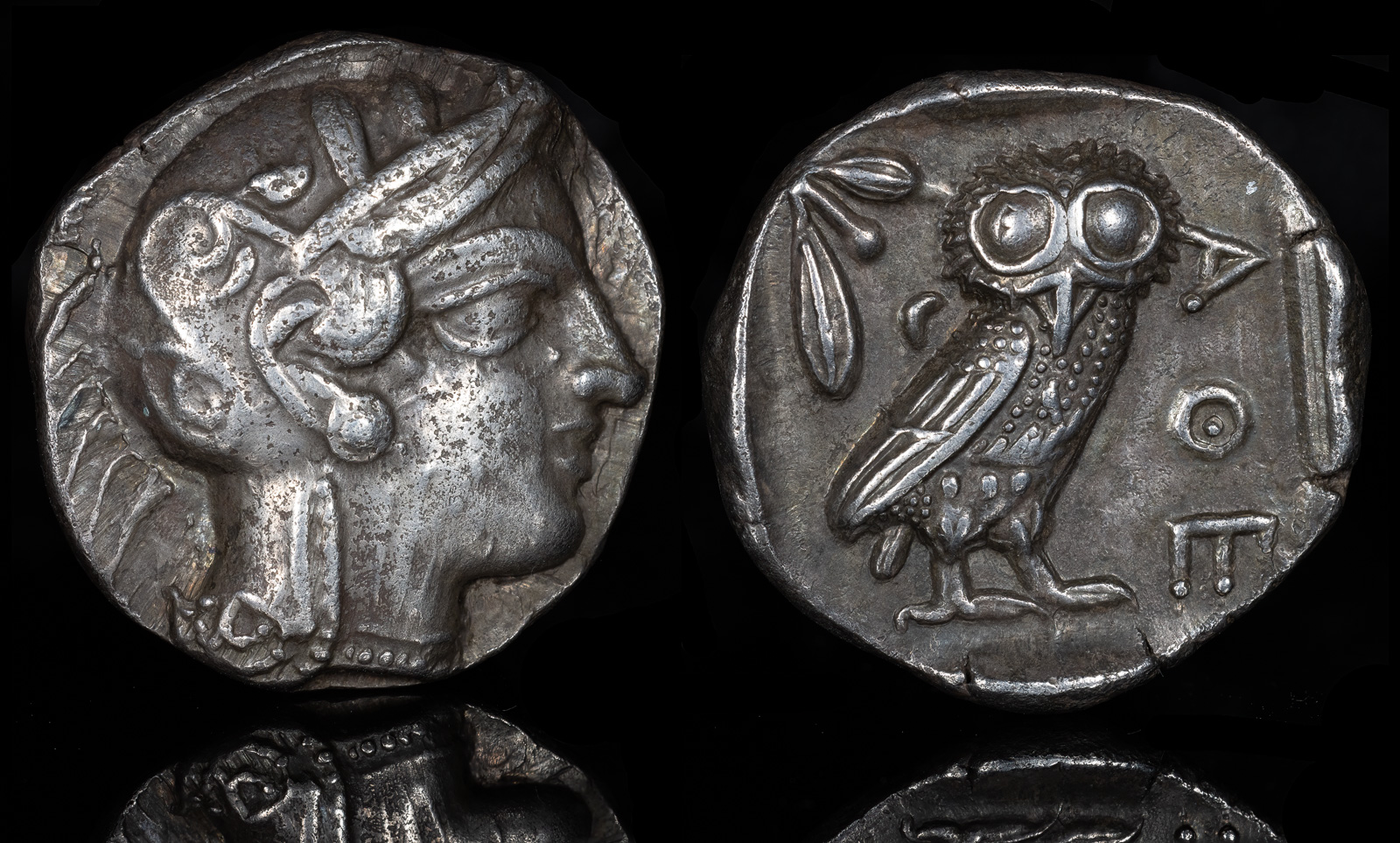
EGYPT, Pharaonic Kingdom. Uncertain pharaoh(s)
Late 5th–mid 4th centuries BCE
AR Tetradrachm 24mm, 17.03 g, 8h
Imitating Athens. Helmeted head of Athena right, with frontal eye / Owl standing right, head facing; olive sprig and crescent to left; all within incuse square. Van Alfen, Mechanisms, Group III.A.1, Fig. 2 = Buttrey Type M. Ex
Ex NGC encapsulation 5872733-112, graded XF, Strike: 5/5, Surface: 3/5.
Ex Ponterio 1985
Ex Robert W. Bartlett Bequest Sold for the Benefit of the American Numismatic Society
In truth, there’s no way to prove that this is a coin of Nektanebo II. He did mint coins with his own name (one of the very few coins with Egyptian hieroglyphics), but those are beyond my means. This coin, generally believed to have been minted before the Archaemenid period, falls in the time period when he ruled.
For those who are confused, yes, this looks almost exactly like the famous tets minted by Athens. That was a standard currency at the time, so it made sense for others to copy it. Throughout the region, Athenian owls became the standard. Besides using those minted by Athens itself, other countries minted their own.
Nektanebo II was famous for not being the father of Alexander the Great. In the Alexander Romance, Nektanebo disguises himself and seduces Olympias. Nothing of the sort occurred, but millions of poorly educated people during the medieval times believed this.
Approximate birth year of Nektanebo II.
The Egyptian army under Teos, with Nektanebo II in attendance, pacifies much of the countryside, takes temples, and raises taxes.
After being turned down by his mercenaries, Teos of Egypt flees to Persia and Nektanebo II becomes ruler of Egypt.
Artaxerxes III Okhos attempts to re-take Egypt, but is completely defeated by Nektanebo II.
Arrtaxerxes III Okhos successfully reconquers Egypt, ending its independence under Pharaoh Nektanebo II.
Artaxerxes III Okhos sends his satraps Belesys and Mazaios to retake Sidon, Tyre, and Byblos. The Persians are defeated by the Phoenicians, supported by Nektanebo II and Mentor of Rhodes.
Artaxerxes III enters Memphis and installs a satrap. Nektanebo II flees to Nubia.
Nektanebo II is besieged by Artaxerxes III in Memphis. He eventually flees north.
Artaxerxes III Okhos finally succeeds in re-conquering Egypt under Nektanebo II, with the help of mercenaries from Argos, Thebes, and Mentor of Rhodes.
Khabash leads a rebellion against Persian rule, but it is defeated. Nektanebo II may have helped the rebellion.